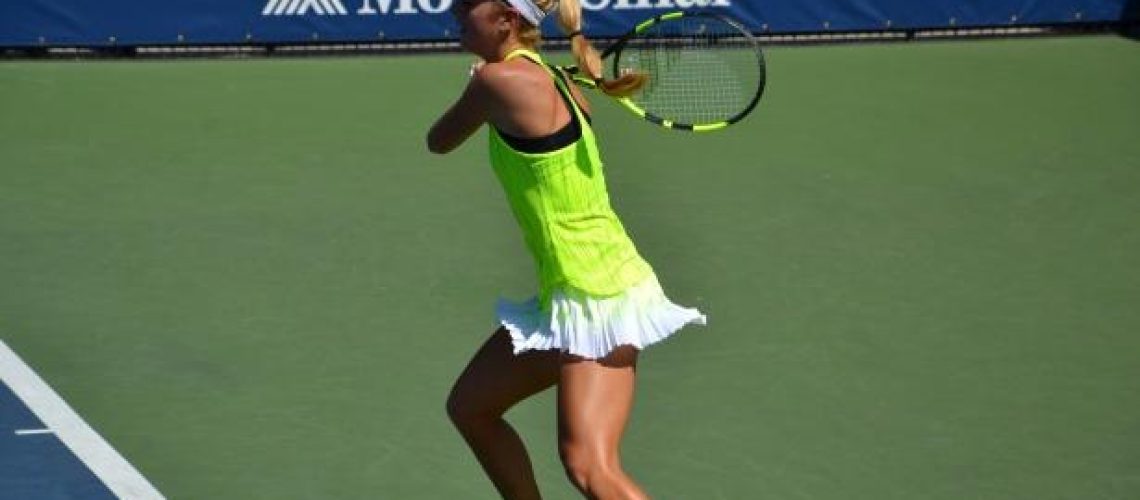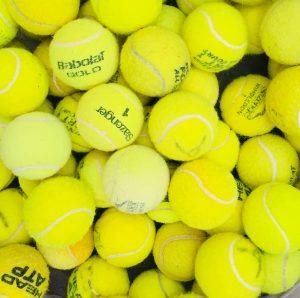We may earn money or products from the companies mentioned in this post.
Brief History of Tennis Tiebreaks

Tennis tiebreaks have a fascinating history that dates back to the early days of the sport The tiebreak system was introduced in response to the need for a fair and efficient way to determine the winner of a set when games were tied
Origin of the Tiebreak System
The concept of a tiebreak was first proposed by James Van Alen, an American tennis official, in 1958 He believed that traditional sets could become unnecessarily long and unpredictable, often extending beyond reasonable time limits
Van Alen’s innovative idea was to introduce a tiebreak as a means to break any deadlock and decide the outcome of a set This would involve playing a predetermined number of points, usually seven or ten, with the first player or team to reach that number emerging as the winner
Evolution Over Time
After its initial introduction by Van Alen, the tiebreak system gained traction and was eventually adopted by major tennis tournaments around the world However, there have been some changes and variations over time
In 1970, Wimbledon became one of the first Grand Slam tournaments to implement tiebreaks in their matches Initially used only in singles matches for deciding fifth sets, it was later extended to other sets as well
Over time, different tournaments implemented their own variations on how tiebreaks are used Some tournaments use them only in certain situations like deciding sets or final sets, while others use them in every set except for the final set
Importance of Understanding Tennis Tiebreaks

For Players
Tennis players must have a thorough understanding of tiebreak rules and strategies if they want to succeed on the court Knowing how to approach tiebreak situations can greatly impact their performance
During a tiebreak, players must be strategic in their shot selection, considering the limited number of points available They need to balance aggression with consistency and take calculated risks to gain an advantage over their opponents
Mental preparation and focus are also crucial in tiebreaks The pressure of such a closely contested situation can easily affect a player’s mindset Understanding the intricacies of tiebreaks allows players to stay composed and make smart decisions under pressure
For Spectators and Fans
Understanding tennis tiebreaks adds another layer of enjoyment for spectators and fans watching matches It allows them to appreciate the tension and excitement that comes with these pivotal moments in a match
By understanding tiebreaker rules, fans can follow the progress of a set more closely, anticipate potential turning points, and engage in discussions about key moments of the match It enhances their overall experience as they become more involved in analyzing strategies and predicting outcomes
Tennis is not just about hitting a ball back and forth; it’s about strategy, mental strength, and decisive moments like tiebreaks When spectators understand these intricacies, they can truly appreciate the beauty of the game
The Basic Rules of Tennis Tie Breaks

When does a tiebreak occur?
In most cases, a tiebreak occurs when the set score reaches 6-6 However, there is an exception in some major tournaments, such as Wimbledon, where traditional advantage sets are used instead
Types of Tennis Tiebreaks:
-
Regular (7-point) tie-breaker:
-
Super (10-point) tie-breaker – mainly for doubles matches:
A regular tie-breaker is played to determine the winner when the set score is tied at 6-6 The first player to reach seven points with at least a two-point lead wins the tie-breaker
A super tie-breaker is specifically used in doubles matches It is played when the set score reaches 6-6 and aims to determine the winner quickly The first player or team to reach ten points with at least a two-point lead emerges victorious
The basic rules for both types of tie breaks:
-
Player rotation: Who serves when?
-
Scoring format:
In a tiebreaker, players take turns serving based on a specific rotation The starting server alternates between players, and they switch sides every six points to ensure fairness and equal opportunities
In both regular and super tie-breakers, points are counted using natural numbers such as one, two, three, and so on The goal is to accumulate enough points to win the tie-breaker by maintaining at least a two-point lead over your opponent
By adhering to these basic rules, tennis players can confidently navigate tie-breaks and determine the outcome of closely contested sets
A Traditional Tennis Scoring Method

When it comes to tennis, the scoring system is a crucial aspect of the game Understanding how the points are counted can make all the difference in determining who emerges as the victor on that pristine grass or clay court So, let’s dive into the world of traditional tennis scoring and unravel its intricacies
The Love-Love Start
Every tennis match begins with both players at “love-love” This poetic term may sound whimsical, but it simply means that neither player has scored any points yet It’s a clean slate, a blank canvas eagerly waiting to be filled with strokes of brilliance and strategic maneuvers
Gaining Points: 15, 30, 40
As the rally commences, each player strives to accumulate points The first point won is awarded 15, followed by 30 for the second point However, there’s a unique twist when reaching the third point – instead of receiving 45 points (as one might expect), players are granted 40 points
The Tense Deuce
Once both players have reached 40 points apiece, an intriguing situation arises known as “deuce” In this nail-biting moment, winning two consecutive points becomes crucial for securing victory But what happens if both players remain tied at deuce? Well, that leads us to..
The Advantage Game
If a player wins a point after deuce has been reached, they gain what is called an “advantage” This advantage puts them one step closer to winning the game However, it’s important to note that in order to secure victory from this advantageous position, they must win another point consecutively
Sealing the Game
Once a player wins a point after gaining the advantage, they successfully seal the game This achievement is not only a testament to their skill and strategy but also brings them one step closer to winning the overall set
The Set and Match
In tennis, matches are usually decided by sets To win a set, players must secure six games with a lead of at least two games over their opponent If both players reach six games each, a tiebreaker comes into play to determine the winner of that particular set The thrilling back-and-forth continues until one player emerges victorious in multiple sets, ultimately claiming the match
So there you have it – a glimpse into the world of traditional tennis scoring From love-love beginnings to exhilarating deuces and advantage points, every aspect of this scoring system adds another layer of excitement to an already captivating sport
Tennis Tie Break Strategies and Tactics

How should players approach serving during a tie break?
When it comes to serving during a tie break, players need to consider two key factors: the importance of first serve percentage and choosing between aggressive or conservative strategies
-
Importance of first serve percentage:
In a high-pressure situation like a tie break, landing your first serves becomes crucial A high first serve percentage gives you an advantage by putting pressure on your opponent right from the start It allows you to control the point and dictate the pace, increasing your chances of winning the game -
Aggressive vs conservative serving strategies:
Players have different approaches when it comes to serving in a tie break Some opt for an aggressive strategy, going for big serves with higher risk but potential rewards This can catch opponents off-guard and lead to quick points On the other hand, some players prefer a more conservative approach, focusing on consistency and placement rather than power This keeps the ball in play longer and minimizes unforced errors
Return strategies: how to handle opponent’s serve during the tie break?
The ability to effectively handle your opponent’s serve is vital in a tie break Here are some key return strategies that can help you gain an edge:
-
Reading opponent’s serve patterns:
Take time to observe your opponent’s serve patterns throughout the match Are they favoring one side of the court? Do they vary their placement or speed? By understanding their tendencies, you can anticipate where their serves are likely to go and position yourself accordingly -
Targeting specific areas in the court:
Once you have a good read on your opponent’s serve, you can strategically target specific areas in the court Aim to return deep and close to the lines to put pressure on your opponent Alternatively, if you notice they struggle with low balls or wide serves, exploit those weaknesses by adjusting your return placement
Mental toughness: how to stay focused and calm during high-pressure moments
Maintaining mental toughness is crucial during high-pressure tie break situations Here are some techniques to help you stay focused and calm:
-
Breathing techniques for relaxation:
Deep breathing exercises can help reduce anxiety and promote relaxation Take slow, deep breaths before each point to center yourself and maintain composure -
Positive self-talk and visualization:
Use positive self-talk to boost confidence and stay motivated throughout the tie break Visualize successful outcomes and imagine yourself executing shots flawlessly This mental imagery can enhance performance and keep negative thoughts at bay
Common Questions and Misconceptions about Tennis Tie Breaks

Do all major tennis tournaments use the same tiebreak rules?
Contrary to popular belief, not all major tennis tournaments follow the same tiebreak rules In fact, there are differences in the final set rules among Grand Slam tournaments For instance, at Wimbledon, the final set must be won by two games, meaning a match can potentially go on indefinitely On the other hand, both the Australian Open and French Open utilize a tiebreak when the final set reaches a certain score
The role of tournament organizers is crucial in deciding tiebreak formats They have the authority to determine how tiebreaks are implemented in their respective tournaments This allows them to adapt to changing demands and preferences of players and viewers while maintaining fairness
Why not just play an advantage set instead of a tiebreak?
Introducing tiebreaks has several reasons behind it One major factor is keeping match durations reasonable, especially for television broadcasts Without a time limit or a mechanism like a tiebreak, matches could potentially go on for hours or even days
Tiebreaks also enhance fairness by reducing the impact of luck or chance events such as wind conditions By introducing a structured format that requires players to win points consecutively within specific guidelines, it levels the playing field and reduces instances where external factors unfairly influence match outcomes
How often do tennis matches actually reach a tie break?
In professional tennis, matches reaching a tie break are relatively common but still depend on various factors Statistics show that around 20-30% of matches end up going into a decisive tie break situation
Several factors can affect whether or not a match reaches a tie break, including the playing style and skill level of the players, court surface, weather conditions, and even mental resilience These variables contribute to the unique nature of each match and make tennis an engaging sport to watch
Useful Links

How Do Tennis Tiebreaks Work?
Grand Slam Tennis Adopts New Tiebreak Rule to Decide …
Grand Slams to test 10-point tiebreak in final set at all four …
BBC SPORT | Tennis | Rules and Equipment | Scoring basics …
Tiebreaker Rules and Scoring System at the 2023 …
Tennis explained: Learn the game
Mixed Doubles Tennis Rules
▷ What Is Tie Break In Tennis? SIMPLE Explanation 2021
Rules for Playing 10-Point Match Tiebreaker in Tennis
8 Tips To Win More Super Tie Breakers
What is a super tiebreak in tennis, rules, points and how is it …
Points and rules
The End of the Endless Final Set: Grand Slams Adopt …
Wimbledon 2022: Why are there new tie-break rules in final …
Fifth-set tie-breaks to go to 10 points at the Grand Slams
Slams to trial 10-point tiebreak in final set starting with …
US Open to join all Grand Slams in playing 10-point final …
Rules of Platform Tennis
Summary of Tennis Rules
9-POINT TIE BREAKER






